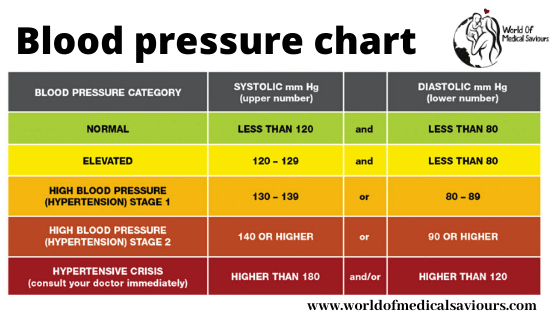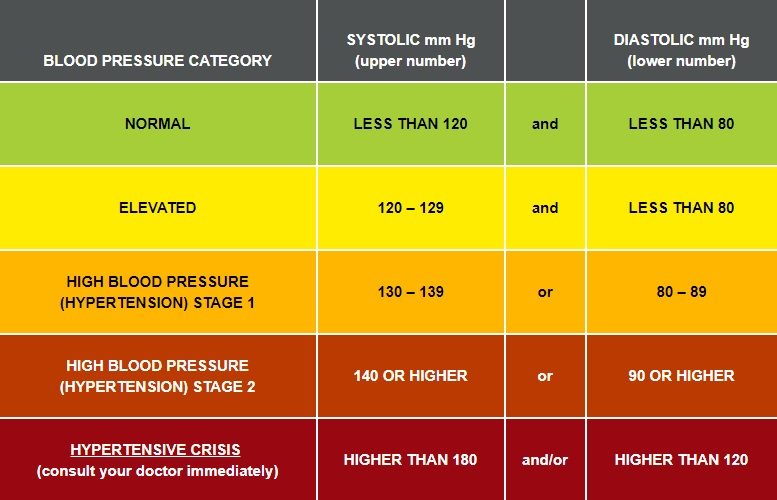

The risk doesn’t suddenly appear once a patient crosses the threshold into a high-blood-pressure stage. It’s important to note that these aren’t magic cutoff points.

Stage 2 high blood pressure: 140 or above mmHg systolic 90 or above mmHg diastolic.Stage 1 high blood pressure: 130 to 139 mmHg systolic 80 to 89 mmHg diastolic.Elevated blood pressure: 120 to 129 mmHg systolic less than 80 mmHg diastolic.Normal blood pressure: less than 120 mmHg systolic less than 80 mmHg diastolic.The new blood pressure scale is as follows:

The first number is systolic pressure, and the second number is diastolic pressure. You’ve probably heard blood pressure given as one number over another number, such as 120 over 80. We measure blood pressure in millimeters of mercury, or mmHg. Patients and their doctors have to have strong communication and good partnerships in order to understand and treat this dangerous condition. They recognize our growing understanding of high blood pressure and why we shouldn’t manage it through medical treatments alone.

But the new guidelines are a step in the right direction. It may seem scary to think about 30 million more people having high blood pressure, or hypertension, essentially overnight. The end result: 46 percent of Americans now are considered to have high blood pressure, up from 32 percent under the old guidelines. If your blood pressure isn't normal, a healthy lifestyle - oftentimes along with medication - can help bring it under control and reduce your risk of life-threatening complications.In November 2017, the American Heart Association (AHA) and the American College of Cardiology (ACC) released new guidelines for blood pressure, lowering the range of what’s considered a high blood pressure reading. If your blood pressure is normal, maintaining or adopting a healthy lifestyle can prevent or delay the onset of high blood pressure or other health problems. If you're a healthy adult age 65 or older, your treatment goal is also less than 130/80 mm Hg. If you are an adult with a 10 percent or higher risk of developing cardiovascular disease in the next 10 years, or if you have chronic kidney disease, diabetes or coronary artery disease, your treatment goal is less than 130/80 mm Hg. Talk to your doctor about taking more than one medication. Stage 2 high blood pressure (hypertension) Talk to your doctor about taking one or more medications. Stage 1 high blood pressure (hypertension) If you also have heart disease, diabetes, chronic kidney disease or certain other conditions, you may need to treat your blood pressure more aggressively. †These recommendations address high blood pressure as a single health condition. Talk to your child's doctor if you're concerned your child has high blood pressure. *Ranges may be lower for children and teenagers. For example, if your blood pressure reading is 125/85 millimeters of mercury (mm Hg), you have stage 1 hypertension. If your systolic and diastolic readings fall into two different categories, your correct blood pressure category is the higher category. Here's a look at the four blood pressure categories and what they mean for you. To get an accurate blood pressure measurement, your doctor should evaluate your readings based on the average of two or more blood pressure readings at three or more office visits. The level of your blood pressure determines what kind of treatment you may need. Blood pressure readings fall into four general categories, ranging from normal to stage 2 high blood pressure (hypertension).


 0 kommentar(er)
0 kommentar(er)
